Description
As a result of the intense pace of life in our generation, many people rarely find the freedom of time to live life with deeper meaning. There is simply not a chance to peer beyond the technical, almost automatic way we have to function: with no slowing down to truly explore what really matters. The famous book Tanya, crafted by Rabbi Shneur Zalman of Liadi, the original founder of Chabad Chassidut, offers comprehensive coverage of the knowledge and guidance that is relevant to the life of every Jew. Its timeless message reveals how every individual is so much more – an intrinsic, precious part of the complete, expansive and wholesome fabric of the universe. This translated Tanya is a fundamental work on the teachings of Chassidut, saturated with enduring wisdom. If you ever find yourself wondering about the deeper meaning of life; if you ever grapple with the unique questions and the practical implications often asked by Jews; if you desire to strengthen your Jewish knowledge and awareness and if you truly seek an encompassing approach to all these life-enhancing queries – then this book offers tremendous insight. Written in modern, clear, and easy-to-grasp language, GPS for the Soul will help you in your intellectual and spiritual journey.
Author: Cohen, Nadav
Published: 2013
Pages: 452
ISBN: 978-965-7498-32-3
Translator: Kuravsky, Reuven / Editor: Kuravsky, Zeev; Kuravsky, Risch
Language: Russian
Format: 6.5 x 9.5, Hardcover, 452 pp.
DESCRIPTION
Journey into the depths of the human soul based on the book Tania
The life of modern man is intense as ever. Only occasionally our contemporary stop to think about where he was in such a hurry, and pay attention to your own soul in the eternal and the Creator of the world.
People are so immersed in the solution of current issues and problems that often do not allow themselves to seriously ask deeper meaning occurring in their life processes.
The main creation of the founder of Chabad, Tanya book provides any Jew detailed information about the structure of his own inner world and gives practical advice on all aspects of his spiritual life.
The book shows that the isolated man is an integral link in the vast and perfect the system established by the Creator of the universe. And the most important thing that each of us is able to affect the system.
This book is for the curious reader.
FOREWORD by Rabbi BERL LAZAR
The book is designed for you to discover the rich world of the treatise “Tania” seminal book Hasidism. Just this year marks 200 years since left this world founder of Lubavitch Hasidim, the Alter Rebbe. “Tanya” was his life’s work, it brings together all the theological and philosophical position that formed the basis of Hasidic serve Gd. Today, when Hasidism actually became the most common way for the return of the Jews to Gd and Torah, the importance and relevance of “Tanya” is particularly high.
Essentially, “Tania” provides answers to the main questions being of every Jew: Who am I? What’s inside of me? What I am different from other people? Why do I have problems in life? Why are some challenges of life are particularly difficult to me? I always want to do well why I do not always succeed? Etc.
And, in general terms, what is more important or my actions that I have inside? What I love Gd with all your heart, or that I do not always get the right to serve Him? And why does the Torah (and for her and Hasidism) the main emphasis is on action, not on thoughts?
This is a problem faced by every person every day. Each of us is constantly evaluates and his actions and his thoughts. Each is a constant internal struggle, stand in the shower “eternal questions” unanswered at which a person can not find peace and harmony. And to all these questions are answered in the Alter Rebbe “Tanya!”
Over the last two centuries, people do not stop to wonder how in the book such a relatively small amount of concentrates as many answers as many lessons for a variety of situations in life! Alter Rebbe himself said that his work is “to anyone who would like to get advice on how to improve life” and that he wrote it “so that anyone could find the answers.” The plan failed completely, “Tania” is not only to give answers to people of that generation, but fully retains its relevance today.
The problem, however, is that not everyone can study the original. And not only because of the language barrier: to understand the wisdom of “Tanya”, it is necessary to rise to a high enough level of religious and philosophical knowledge. Today, therefore, to draw from the spiritual treasures of the Alter Rebbe, so many people can not do without explanations, without some sort of guide, a guide to the world, “Tanya.” And I am very glad that now there was a guide in Russian.
Offered to your attention the book Nadav Cohen «GPS Soul” is a summary of the basic ideas of “Tanya” systematic exposition, very logical and, most importantly, written in plain language understandable to the people of the XXI century. I want to especially thank for this as the publishers and translators. I am sure that readers will get through this book the key to our rich spiritual, the key to his own soul, and to improve their lives.
There is a famous story told by the founder of Hasidism, the Baal Shem Tov. Once he got up into the spiritual worlds, to ask Moshiach, when he comes to give our people the final deliverance. Moshiach said: “I will come when your sources spread out” that is, when the Hasidic world view comes to every Jew. And I very much hope that the publication of this book will be a step that brings the arrival of Moshiach and helps each of us to meet it with dignity.
Lazar
WORD TRANSLATOR
About the Book
Until the 70s Tania book withstand more titles than any other Jewish Book1 remained inaccessible Russian-speaking readers.
In 1976, Golda Lipsh started working on the translation of the Tanya. The publication of the first parts of the book coincided with the beginning of the revival of Jewish life in the Soviet Union. Books secretly crossed the iron curtain, and the young Baal Tshuva took the path of returning to our roots, enthusiastically began to study the philosophy of Hasidism for a new translation.
By 1979, it was transferred to the first three parts of the book, the main components of its part2. Translation edited by the head of the publishing house “Shamir” prof. Irmiyagu Branover and rabbis 3. D. Levin and Okunev. Lubavitcher Rebbe actively interested in translation in all stages of its implementation; Translation drafts handed the Rebbe, and his remarks were made in the book. At the end of the 1990 translated into Russian Tanya was completed efforts p. NC Rapoport and M. Schneider.
Popularity transfer all increased, and the range of students is constantly expanding, but the translation of Tanya remained available in full only person ready to seriously explore un easy text Pestryaev terms such as aspect, or emanation of Ein Sof.
However, these publications covered only the first chapter of the book, leaving much of it unknown to the general reader. This book seeks, to a certain extent, to fill this gap.
On the other hand, this edition no way should not and can not replace the study of the original text with a qualified instructor Tanya. This was the Lubavitcher Rebbe writes in the preface to the first translation into English Tanya (the full text of the preface to the Russian translation can be found in a Russian translation of Tanya publishing Shamir)
… Of course, any translation is at best no more than an inadequate substitute the original. However, it is hoped that this publication will be a big help … studying Hasidism Chabad Hasidism in general and in particular.
In this, the year 5773 the world celebrates 200 years of Gistalkus (ascension of the soul), the Alter Rebbe, author of the Tanya. Without a doubt, the study of Torah will bring him one day when we personally meet with the author of the Tanya, and also honored to hear from the King Moshiach “new Torah”, which fully revealed the great light contained in the book of Tanya.
1 Currently, at the initiative of the Lubavitcher Rebbe, Tania stood about 5.5 thousand. Editions published in most countries, including It has been translated into Yiddish, English, Italian, French, Spanish, Arabic, Russian, Portuguese, Georgian.
2 In the book you hold in your hands these retold three parts: Likutei Amar, Shaar Gaihud Vegaemuna, Igeret Gatshuva.
ABOUT TRANSLATION
This translation is intended for the general reader who is not familiar with the teachings of Hasidism and its terms, so most of the terms in the book is accompanied by a translation or a short explanation. Sign of everywhere r corresponds to the Hebrew letter ה and read like English h.
According to the Alter Rebbe, author Tania “… every reader reads differently, according to their ability to understand and embrace
I say that to him. “3 Perhaps some topics in the book, the reader wish to read two or three times in order to assimilate the information and understand it. Note that the format of the book is not allowed to include in it many of the comments and explanations to the book Tania, contained in the teachings of Hasidism.
Jewish sages say: “As there is no grain of straw, so there is no book without error.” My request to the reader: if the book found a typo or error in the presentation of the text, inform the editors, and the error will be corrected in the next edition of the book. If you have any questions related to the content of the book, remember what was said in Tractate Avot: “shamefully not able to learn.” Contact with God’s help I will try to answer reader-friendly way.
I offer prayers to God that this book will help the reader in search of his own soul.
INTRODUCTION
Hasidic movement was conceived in Galicia in the early 18th century. Its founder, the great Rabbi Yisroel Baal Shem Tov, carried the secrets of the Torah to the common people, couching them in understandable to the ordinary Jew stories and parables. The Baal Shem Tov sought to inspire his fellow mechanical stop sending their religious duties and replace it with a fervent and sincere service to the Creator. He wanted to commands executed with soul and feeling that the Jews sought to find inherent in their inner meaning.
The successor of the Baal Shem Tov became Rabbi Dov Ber of Mezeritch. Continuing the work of the great teachers, Mezhirichsky Magid spread the secrets of Torah, revealing them to the broad masses of Jews. Such well-known concept of prayer, study of Torah, love of neighbor and the joy Magid presented in a completely new light. A generation later, the structure of the Hasidic movement has changed dramatically: in many cities were autonomous Hasidic community to rally around a number of students Magid.
One of these students was Rabbi Schneur Zalman of Liadi, the Alter Rebbe, nicknamed “Old Rabbi.” Movement vozglavlyavmoe they became known as “Chabad” an abbreviation Hochma, Bina, Daat (wisdom, understanding, knowledge). The peculiarity of its approach compared to its predecessors Alter Rebbe expounded in the holy book “Tania”, a seminal book of Hasidism.
In Tanya reveals a picture of the human soul. Knigapovestvuet the soul of a Jew and the structure of the spiritual world, the importance of the commandments of the purpose of human life and much more. Most spiritual, lofty concepts it makes logical and clear, bringing them to the human mind.
In addition to the upright faith, says the Alter Rebbe, the Jew should use wisdom Chochmah and Binah understanding bestowed upon him by God, to capture and understand even the most abstract ideas. In addition, learned need to carry up to his consciousness of Daath. It is the understanding and knowledge of spirituality and make G-dliness closer, allowing a person to make radical changes in his own soul.
Since writing Tanya has been more than two hundred years, and modern man, wanting to study it, will be forced to resort to the help of a teacher or written comments. That is the purpose of the book you are holding; It is intended for readers of any training, who wants to get acquainted with the contents of the Book of Books Chassidic teachings. Stipulate that although this book retold the whole Tania from beginning to end, it can not replace the study of the Tanya in the original.
The book is based on a series of lectures delivered by the author at the Institute of Kabbalah Ascent, the city of Safed. Special thanks to Rabbi Shaul Yosef Lightyear for help with this project.
Rav Nadav Cohen
CONTENT
Gates first. A long way
Likutei DMAP, Ch. 1-17
Chapter first. What I do
Chapter Two. Second Soul
Chapter Three. 10 powers of the soul
Chapter Four. Robes of the soul
Chapter Five. Mystery Compression
Chapter Six. The other side: the animal soul
Chapter Seven. You can or can not?
Chapter Eight. Outright
Chapter Nine. Tzadik
Chapter Ten. Rush
Chapter Eleven. Beynon
The gates of the second. A short path
Likutei DMAP, Ch. 18-25
Chapter Twelve. Inheritance
Chapter Thirteen. Where is Gd?
Chapter Fourteen. Why did Gd not see?
Chapter Fifteen. The inner desire
Chapter Sixteen. No choice!
The gates of the third. Rejoice!
Likutei DMAP, Ch. 26-34
Chapter Seventeen. We should be happy!
Chapter Eighteen. Rejoice always!
Chapter Nineteen. Broken heart whole heart
Chapter Twenty. True joy
Chapter Twenty-One. The joy of the soul
Chapter Twenty-Two. To love every Jew
The gates of the fourth. The main thing – it
Likutei DMAP, Ch. 35-37
CHAPTER TWENTY-THREE. Candle Almighty the soul of man
CHAPTER TWENTY-FOUR. goal
CHAPTER TWENTY-FIVE. Expand spark
CHAPTER TWENTY-SIX. Making the world cleaner
The gates of the fifth. Kavanagh right mood
Likutei DMAP, Ch. 38-50
Chapter Twenty-seven. Kavanagh
Chapter Twenty-Eight. Wings
CHAPTER TWENTY-NINE. In the Name of Unity
Chapter thirtieth. Fear of Heaven
Chapter Thirty-first. Love
Chapter Thirty-second. Reflection in water
Chapter Thirty-Three. Above all
The gates of the sixth. Do I svyatilishe
Likutei PMAP, Ch. 51-53
CHAPTER THIRTY-FOUR. Make me a sanctuary
Chapter Thirty-fifth. And I will dwell among them:
The gates of the seventh. Gate of Unity and Faith
Shaar gaihuya vegaemuna, Ch. 1-12
Chapter Thirty-sixth. To believe and understand
Chapter Thirty-seventh. Something from nothing
Chapter Thirty-eighth. Constructed good
Chapter Thirty-ninth. Higher Unity
Chapter forties. Simple Unity
The gates of the eighth. The message of repentance
Igeret gatshuva, Ch. 1-12
Chapter Forty-first. Teshuvah: The Return
Chapter Forty-second. Tshuva Come, gay!
Chapter Forty-third. Tshuva Tata
Chapter Forty-fourth. Tshuva Eli
Chapter Forty-fifth. Tshuva with joy
A FRAGMENT FROM THE BOOK
Creator and His Torah
The fact that the apparel unite us with the Torah and the commandments, which are an integral part of the Creator. Because of this man’s soul is able to fully unite with God. The forces of the soul (mind and emotions) are not able to bring to such a level of unity. This our sages said: “The main thing is not teaching, and action.” Even the most straining the mind to the heart and causing the most sublime sense, it is impossible to achieve this unity with God, which is achieved by the physical execution of the Torah and the commandments.
In this chapter we will try to explain the difference between the practical execution of the commandments and in-depth studies. More precisely, we will see the benefits of studying Torah in front of the commandments.
However, we still have not answered one question left over from the last chapter: how could the Creator instead of itself, infinite in limited, specific actions are called commandments?
Mystery Compression
Again, it all depends on how we look at the Creator. Three options:
First option. Creator is large, very large, above all else. But it has its limitations.
The second option. The Creator is not limited. He is infinite.
This approach is correct, but there can be problems.
This approach may lead us to believe that as the world, as opposed to the Creator, has limitations, the Almighty is not so important that the world is going on. It may be even a suggestion that because He is infinite, He can not be placed in something limited, and therefore, to get to him, you must reset limiting human physicality and join it to spirituality.
In this approach, two practical problems and filosofekaya. Firstly, this approach may alienate people from the practical execution of the commandments. Secondly, determining the Creator as “infinity”, the man who unwittingly acknowledges the Creator limited. Limited infinity. It does not sound quite familiar, but “infinite” means “not capable of being finite,” and this will agree, limitation.
Third Embodiment. The Creator is not limited by any boundaries or infinity. He is above both of these definitions, and therefore is able to merge them together. Moreover, looking over in finite or infinite, He sees them as the same thing. The fact that in our understanding of infinity above, stems from our limited view. The Creator is so superior to both of them that they are exactly the same for him.
Perceiving the Creator of the third way, we understand that He is able to accommodate himself wherever he wants, including in our material world. Nothing in this He can not hurt.And he really did so, giving us the Torah. He squeezed and fit himself into the letters of the Torah, in its stories and instructions, and is now fulfilling the commandments of the Torah, we catch the Creator.
Compression, but not the elimination of
You would think that if the Creator “squeezed” themselves to fit in the commandments, He is not the whole of the Torah completely, but partially. But in fact Tzimtzum compression must be understood differently.
For example, flying away into space astronaut needs food (Moshe Rabbeinu rare exception). Unable to allocate space on the ship for such a large number of provisions, NASA specialists have developed special capsules and tubes that contain everything a person needs to eat during the day.
Compression is not a concession to some parts, and the concentration of all, in its entirety, but in a limited way. Another example of this is a huge library that can fit on a small card.
Ice cubes
If your intention is to carry water from one place to another, but do not have the necessary utensils, you can use the original method: the water can freeze, and transport it will be much easier. So did Gd and the Torah: He wanted to give us his infinite wisdom, but we are limited and can not accommodate infinity. Therefore, the Creator “freeze” their wisdom and squeezing, put it in the Torah and the commandments.
Just as in life seen ice Aboriginal does not understand that in fact it is water, and that picking up the ice, it keeps water (and the water is not covered in ice, and the ice is water) and the Torah. A man capable of thinking that in no Gd, just does not know that the Creator himself “froze.” But in fact, fulfilling a commandment or by studying Torah, he “holds” with the Creator himself.
However, the fact that God is in the Torah and the commandments in a compressed form, does not matter. After all, when you joyfully embrace each child at the meeting, no you do not say, “Hey! You can not hug a friend, and his shirt! “. Everyone knows that entering into another’s arms, you do not care about how many clothes on it. All the same, there is your friend!
What’s better?
What’s better? Fulfillment of the commandments and good deeds in this world, or the pleasure of the Divine light in the world of the future?
Climbing in Gan Eden (paradise), the soul receives a reward for all the work done during the life of this world. She feels the Divine light, which is brought into the world, is engaged in the Torah and the commandments; There is no greater pleasure. In addition, the soul rises constantly from one stage to another. However, even the soul, for thousands of years to climb higher (as the soul of Rabbi Shimon Bar Yochai, located in GanEdene 2000 years, and every year is becoming more high light), enjoy a light of the Creator, and does not comprehend him. It looks like a human, to dine at the king’s party, but did not meet, and, moreover, do not hug the king himself.
But each of us, fulfilling even the most basic commandment, held at this time for the Almighty himself, causing the envy of being in the World of Truth shower. How much should bring us joy every commandment that we are able to do!

![GPS for the Soul [GPS души]](https://e9dtcjviczt.exactdn.com/wp-content/uploads/2023/12/gps.jpg?strip=all&lossy=1&ssl=1)
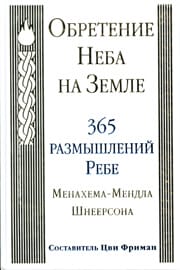



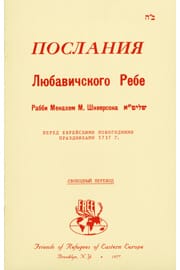

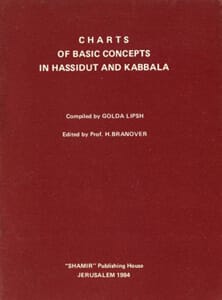

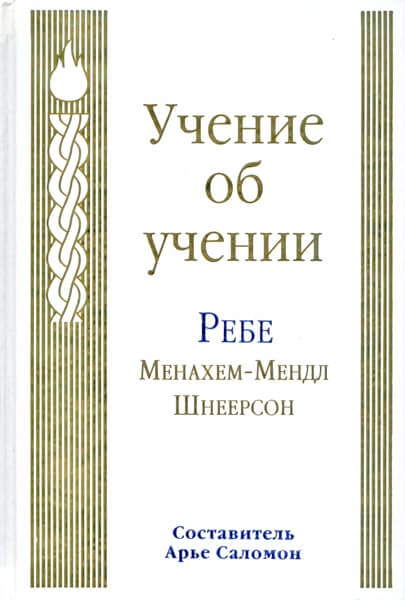
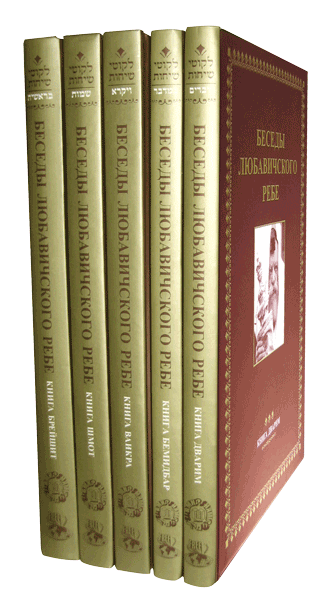
Reviews
There are no reviews yet.